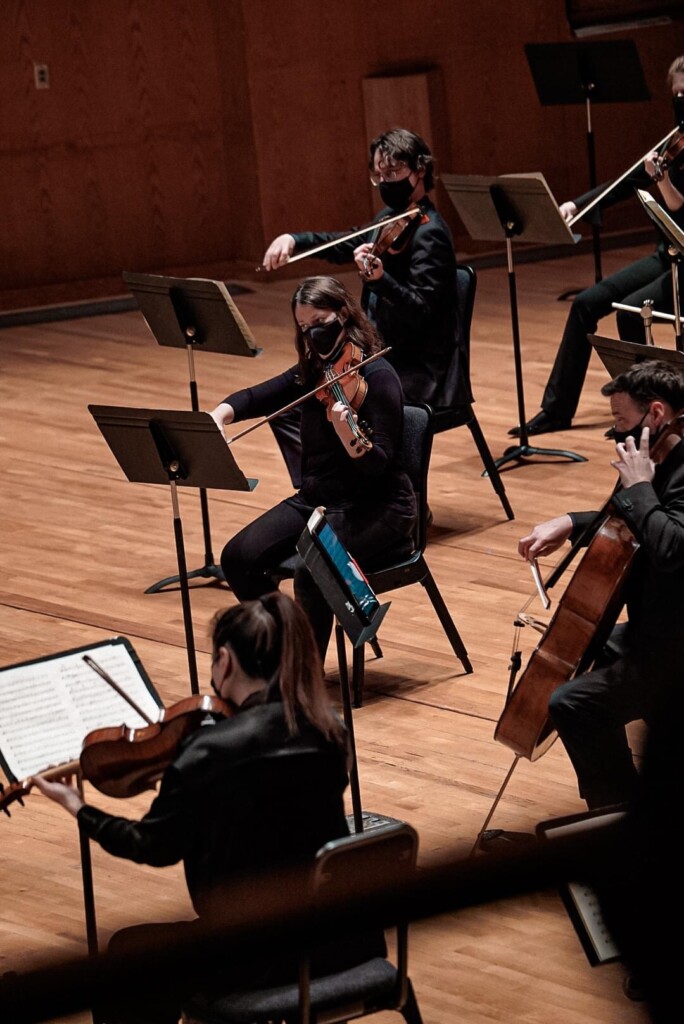The most recent Utah Symphony concert once again evidenced an eclectic, compact, innovative approach to programming which, in this instance, delivered the orchestra’s first performances of two works from 1998 and 2011, respectively.
The smart staging logistics made for a quick transition from Elliott Carter’s Double Trio, which the composer wrote just ahead of his 103rd birthday in 2011, and five selections from Wynton Marsalis’ A Fiddler’s Tale, a jazz-inflected homage to Igor Stravinsky’s The Soldier’s Tale.
Indeed, the pandemic-related precautions have produced some pleasant bonuses because otherwise these two small-scale works likely would not be programmed in an Abravanel Hall concert.
As conductor, Thierry Fischer set the tone for many delightful moments. Carter’s piece, which premiered 10 years ago at a concert at the Montreal Museum of Fine Arts in honor of a new concert hall, is an excellent starter for listeners who are just being introduced to this composer’s prodigious output.
Running eight minutes, the piece signifies Carter’s signature style of streamlining and juxtaposing impressionism, neo- and retro-expressionism and modernism into a cogent exploration of fragile textures but also resilient structures of sound. The combination of solo strings with trumpet and trombone might bedevil an ensemble’s efforts to balance the writing, which exudes the aesthetic of vulnerability as the music weaves through various harmonic structures and textures. But, Fischer leads the ensemble to very satisfying results. The best moments pit muted brass instruments against stringed instrument effects such as slamming pizzicato and double-stops with scraping sound. Surely, at 103, Carter got to the point clearly and quickly.

Marsalis’s piece uses the same septet instrumentation as Stravinsky’s work. Music history students know the Stravinsky piece, based on a Russian folk narrative and written during WW1, as one of the earliest expressions of jazz in a modern classical piece. The movements in the Marsalis piece parallel its predecessor. Like Stravinsky, Marsalis incorporated a libretto (written by Stanley Crouch) but it is omitted for this performance. While the music is not as pioneering as in the Stravinsky piece, it nevertheless is rich in imagining the characters and the story on its own merit. It is a miniature showcase for the musicians and the breakout swing to jazz in the last selection comes off with the right punch.
As bookends for this concert, there was Bach’s Concerto for Two Violins and Wagner’s Siegfried Idyll. Madeline Adkins and Claude Halter shine as soloists in a reading that clipped along at appropriately brisk tempi, which lightened effectively the ensemble to produce an exquisite balance between the soloists and the strings and harpsichord. Fischer’s lead in the Wagner classic produced the sumptuous sounds that surely will entice audiences back to the hall when the full symphonic forces finally will return to the stage next season.
These concerts, which run a bit longer than an hour and have no intermission, have been programmed with good objectives. They introduce audiences to instructive mixes of classical favorites and less familiar contemporary repertoire, sparking an expansive appreciation of the stylistic and aesthetic ranges. Furthermore, they reinforce the prevailing judgment of the outstanding musicianship in the Symphony, which has advanced significantly under Fischer’s tenure.
For information about May concerts, see the Utah Symphony website.

